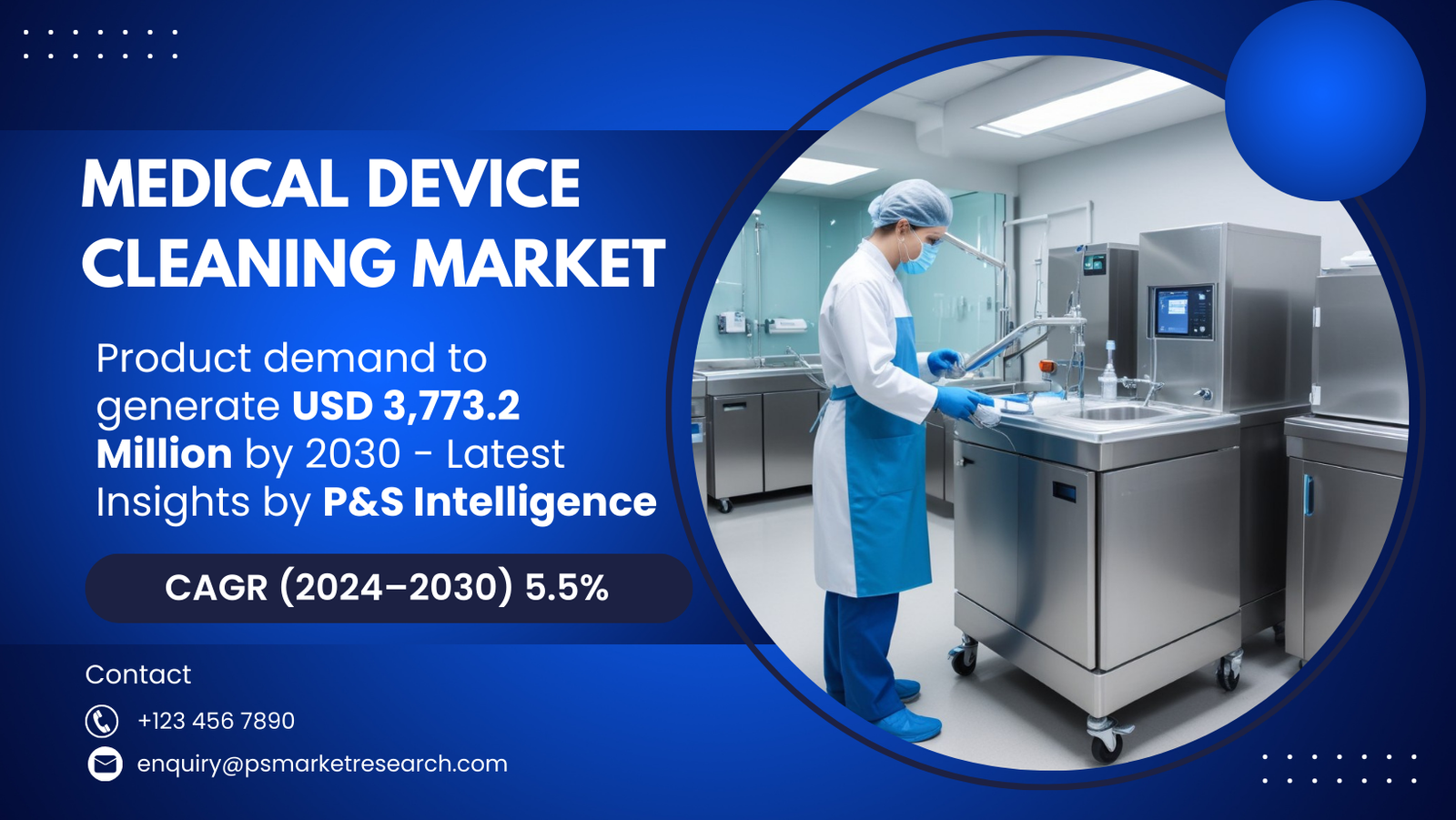Market Overview
The global medical device cleaning market will generate an estimated revenue of USD 2,735.2 million in 2024, which is expected to witness a CAGR of 5.5% during 2024–2030, reaching USD 3,773.2 million in 2030.
The market is expanding due to growing awareness among patients and healthcare professionals about the advantages of effectively sterilized medical devices. Factors driving this growth include the rising incidence of chronic diseases, increased frequency of accidents, higher numbers of surgical procedures, and a growing elderly population.
Investments in research and development focused on infection control technologies are contributing significantly to the market's attractiveness. Biopharmaceutical and pharmaceutical companies are leveraging advanced research capabilities to integrate cutting-edge techniques into their laboratories and manufacturing facilities, thereby stimulating market expansion. For instance, the introduction of Novozymes' Remify Everis 100 L in June 2020 illustrates the potential for other companies to introduce innovative products featuring advanced technologies.
The prevalence of hospital-acquired infections (HAIs) is also a key driver, contributing to high mortality rates worldwide. Initiatives and campaigns promoting proper cleaning practices for medical equipment are being implemented by health organizations globally to address this critical issue.
Key Insights
· The surgical instruments category holds the largest revenue share, approximately 40% in 2024, driven by the need for effective cleaning solutions due to rising HAIs and chronic diseases.
· Cardiovascular and orthopedic surgeries are increasing globally, bolstering demand for surgical equipment disinfection.
· Semicritical devices, such as endoscopes and dental tools, dominate with a 55% market share in 2024, requiring stringent cleaning protocols before each use.
· Disinfection products are the fastest-growing category, fueled by increasing global population and higher incidence of infections.
· Hospitals and clinics are expected to hold a 50% market share by 2030, driven by rising healthcare facilities and extensive use of medical devices.
· Diagnostic centers are witnessing rapid growth due to escalating infectious and chronic diseases, increasing demand for sterilization and disinfection.
· Chemicals, including alcohol, hydrogen peroxide, and chlorine-based disinfectants, lead the market with a projected 5.8% CAGR through the forecast period.
· North America commands a 40% market share in 2024, driven by strategic collaborations and stringent government regulations on disinfection.
· The region benefits from a strong market due to the use of non-disposable medical devices and efforts to reduce hospital-acquired infections.
· Canada's market is expanding due to medical device outsourcing, regulatory cleanliness standards, and favorable healthcare reimbursement policies.
· Awareness campaigns and volunteer efforts in North America emphasize the importance of medical device cleaning and infection control.
· Getinge AB's 9100E Cart Washer and STERIS's acquisition of Cantel highlight advancements in infection-control products in North America.
· Asia-Pacific anticipates the fastest CAGR due to increasing healthcare expenditures and infrastructure development.
· The region's market growth is driven by the COVID-19 pandemic and expanding outsourcing capabilities in healthcare.
· Asia-Pacific's rapid market expansion also reflects advancements in healthcare standards and increasing awareness of infection prevention measures.
Source: P&S Intelligence



